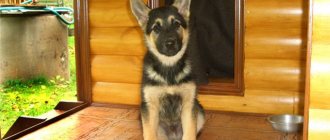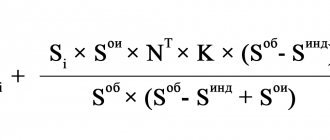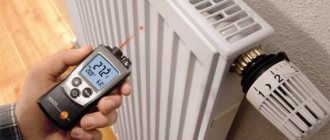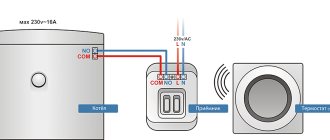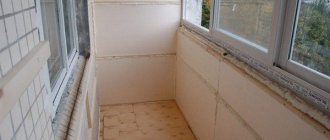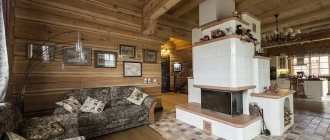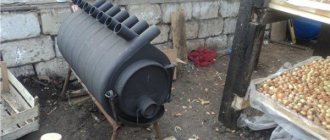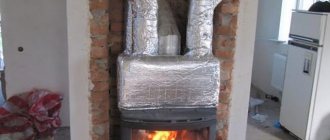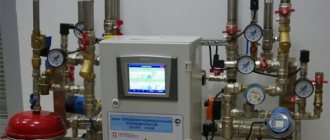If we decide to have animals at home, then we are obliged to take care of them. Cats live next to their owner. There are dog breeds that also live in the house. At the dacha, the dog is kept to guard the area and lives in its own separate room. How to protect your animal from freezing during the cold season? Our article contains information about the dog house heaters used.
To organize heating of the booth, it is necessary to bring the electrical network closer and install a closed socket.
- Panel heaters for dogs
- Film heaters for booths
- Methods for installing panel and film heaters
- Warm floor for a booth
- Homemade booth heater
Film heaters for booths
More recently, film booth heaters operating on the basis of far infrared radiation have appeared on the market. The main advantage of using such heaters is that they heat up evenly over the entire area to a temperature of + 60 degrees. Long-wave radiation of the infrared spectrum is as close as possible to the natural radiation of the animal’s body. Your four-legged friend will not only be warm, but will also receive a wonderful effect - an excellent immune system.
The conductor strips in the ultrafine system are connected to each other in parallel. If one or more strips are damaged, the heating system still works. Due to the high thermal conductivity of the carbon used and the maximum heat transfer of the film, these heaters are the most economical devices.
Sawdust
The best option for bedding for a dog that lives in an enclosure is pine or cedar sawdust. They are environmentally friendly, easy to recycle, easy to find on sale, and quick to replace. The sawdust is quite soft and very pleasant for your pet to lie on. The filler has a very pleasant and aromatic cedar smell. Another advantage is that sawdust absorbs moisture and unpleasant odors well, and also repels fleas and ticks. When removing sawdust, you can only change the most contaminated part of the material.
However, this material also has its drawbacks. Sawdust must be constantly loosened, as it tends to sag quickly. The next disadvantage is that this material often gets into the animal’s eyes, thus causing conjunctivitis and eye injuries. To avoid such problems, it is necessary to use large sawdust and regularly check your pet's eyes and ears.
You should be extremely careful when purchasing sawdust, as sometimes unscrupulous sellers add wood waste, which contains parasites, to the sawdust. Sometimes they contain enterobacteria that penetrate the trees even before they are processed. It is necessary to buy sawdust only from trusted companies. But still, sawdust is not recommended as bedding for pregnant bitches and puppies. If there is an infection in the bedding material, it will most likely get into the dog's nipples and vagina, causing an infection in the body. Infection of babies occurs through the mother's umbilical cord. They often die before diagnosis is made.
Methods for installing panel and film heaters
Manufactured heaters can be installed inside the frame of a dog house. A layer of mineral wool is attached to the outer skin, and then a reflective screen. A film or panel heater is attached to it for the dog in the kennel with the working surface towards the inner lining, and then the lining itself is nailed.
The panel heater can be installed on the wall of the booth. For such an installation, you need ordinary self-tapping screws that attach the device directly to the wall.
To reduce energy consumption and easily regulate the heating temperature in the booth, it is advisable to buy a thermostat. To protect the device from the dog's teeth, you need to install a protective metal box with holes.
IR film for wall or ceiling
There is an opinion among dog lovers that it is better to make one or a couple of walls of the kennel warm, not the floor, by placing infrared heating film on them. They say, give the animal a choice - to lie down near a warm wall or, conversely, near the entrance, closer to fresh air.
In fact, this is not important, since according to the laws of physics, warm air inevitably rises, and it will still not be possible to directly warm the sides of the animal against the wall. But if you still choose this option, place the film under the inner lining to avoid damage to the heater by animal claws. And even better - under the ceiling of the building.
Warm floor for a booth
It is better to create such a heating system during the construction of the booth itself. If the booth is spacious and high, a warm floor can be installed after the dog has settled there. It is necessary to knock down a box of plywood sheets and beams according to the dimensions of the base of the booth. The bars determine the height of the box. A thermostat and a heating wire with a power of 80 W are installed inside the box. To do this, holes are drilled in the base, through which a wire is threaded and filled with foam. A heating wire is laid on the mounds and a mount for the thermostat is installed.
To seal cracks and solder joints, it is best to use silicone sealant.
A special hole is made on the side for the supply wire. The supply wire is soldered to the thermostat and heating element. The thermostat is adjusted by 60 degrees. After the connection has been completed, all cracks and joints must be carefully sealed. The box is filled with dry fine sand and covered with plywood on top. It is necessary to conduct preliminary testing before installing heated floors in the booth. If, after turning on the heating system, the box becomes warm, your reliable friend will be warm in winter.
The cable to the booth must be connected in such a way that the dog cannot gnaw it with his teeth. It is best to use a metal pipe.
Power cable and circuit breaker in the panel
To power the system with electricity, a cable (for example, PVS or VVG brand) will have to be run through the air or in the ground across the yard. Moreover, the wire must be hidden in the pipe, and its choice depends on the drawing method.
In the case of overhead wiring, choose a pipe made of HDPE or polyamide that is resistant to UV radiation and temperature changes. You can bury the cable in the ground in a special red double-walled polyethylene pipe, or save money and choose a regular water supply or technical polyethylene pipe.
At what depth to lay the cable: in theory (according to GOST recommendations) - 1.2 meters. In practice, in a private yard, as a rule, they do not dig so deep.
How to choose cable cross-section
The easiest way is to use the following simplified empirically derived dependencies:
- cross section × 10 = maximum current (in amperes)
- amperage × 220V = power (kW)
Therefore, knowing the power of the floor heating system in the dog house, you can easily determine the required wire cross-section.
First, look at the passport of the heating cable to find out its linear power (in W/m). To determine the total power, we simply multiply the found indicator by the actual number of meters.
For the above cable, a piece of 9 meters from Gray Hot, the total power is indicated and is 129 W, or 0.13 kW.
Using this formula, we determine the maximum current:
0.13kW / 220V = 5.91A
Therefore, the conductor cross-section:
5.91/10 = 0.59mm². Let's round it up and get 0.75mm².
Or, in the case of a ready-made mat:
for the above-mentioned Gray Hot 0.5x1.2m, the total rated power is 92W. Let's round it up to 100W for ease of calculation.
In this case, with a load of 0.1 kW, amperage = 0.1 kW/220V = 4.55A.
Cross section = 4.55A / 10 = 0.45mm². - i.e., choose 0.5mm².
We calculate the rating of the “machine” for cable protection
Please note that to protect against possible emergency situations (overload currents or short circuits), you need to install a separate circuit breaker “on the booth” in your home electrical panel.
Its rating is selected based on the maximum load of the system section. Let us illustrate for our example with a heating mat of 0.1 kW and a maximum current consumption of 4.55 A.
To determine the rating of the circuit breaker, it is necessary to add a margin of 15-20% (no more to ensure adequate operation):
Next, go to the online catalog and choose the closest nominal (only up!) “automatic machine” - in our case it’s 6A. Prices, as you can see, are quite affordable - from 40 UAH.*
Homemade booth heater
Craftsmen prefer to use homemade dog heaters. To make your own booth heating device, you need an asbestos-cement pipe, a 40 W light bulb, a suitable sized tin can, a cable, a socket, and a plug. A kind of lampshade for a light bulb is made from a tin can. The size of the can used should be such that it moves freely inside the pipe, but does not dangle. The light bulb in the lampshade is placed inside the pipe, which fits into the booth.
During 12 hours of operation, the heater consumes only 480 W. Over the course of a season, it takes 6 kW to heat the booth, which is quite a bit. Your four-legged friend will simply be grateful for the care.
Homemade booth heater made from a light bulb (video)
The yard dog is constantly on the street. Its health, activity and appearance are very dependent on the conditions of detention. Maintaining the vitality of a pet during the cold season is possible only with proper organization of the temperature regime inside the kennel. Let's look at simple and affordable options for how to insulate a dog house for the winter with your own hands, and also offer the most effective and economical solutions for additional heating of the enclosure.
A fisherman's dream
Fishing video | Winter fishing | A fisherman's dream
We present to your attention a video on the topic: “DIY winter fishing booth, drawings.” There is something new and educational for every fishing enthusiast. This video may well become a source of interesting solutions in matters of fishing and everything connected with it.
Dogs are man's faithful friends. They help us hunt, graze livestock, protect private property and our lives, and participate in search operations. Therefore, it is the duty of every diligent owner to take care of the health of his pet and provide him with comfortable living conditions. This kind of care is especially relevant for animals living in a booth all year round.
Do I need to insulate a doghouse for the winter?
Many owners of four-legged pets wonder whether the dog’s kennel is cold in winter. There is no definite answer to the question - it all depends on the climatic characteristics of the region and the breed of the dog.
Dog handlers agree that long-haired, wire-haired and short-haired dogs with thick undercoat can withstand frosts down to -40°C. Some breeds, such as Huskies, Leonbergs, Moscow Watchdogs and Bernese Mountain Dogs, prefer to sleep in the snow and stay outside even when it gets cold.
However, whether a dog freezes in a kennel in winter depends not only on the breed, but also on the conditions in which the pet grew up. If he previously lived in an apartment, it will be difficult for him to spend the winter in a kennel without insulation. In a warm room, dogs shed more and lose their warming undercoat. It is necessary to adapt the animal's body to new living conditions gradually.
If the region is dominated by cold winters with long periods of sub-zero temperatures, then it is better not to risk the pet’s health and set up a warm dog house.
Following a number of rules will help create an insulated kennel and reduce heat loss from the structure:
- It is better to locate the entrance to the pet’s home in a place where the likelihood of drafts is minimal.
- It is advisable to use wood for the construction of walls - the material has low thermal conductivity.
- The dog house should not be placed on bare ground. The structure must be placed on bricks or wooden beams. The air gap will protect the bottom from freezing.
- A draft is worse than frost for dogs. Therefore, the hole must be curtained with a thick canopy. The material should be dense and weighted so as not to sway in the wind.
- It is important to maintain the optimal size. The dog can warm the compact booth with his breath. However, in a structure that is too cramped, the animal's movements will be limited.
It is necessary to prevent leaks in the winter hut - eliminate all cracks in the roof and take care of waterproofing the roof even before insulation.
Peculiarities
Those dogs that live in an apartment with their owners throughout the year often do not have their own house; they only need a specific place, a rug or soft bedding for sleep and rest. Due to prolonged living at home, dogs' fur becomes less thick and the undercoat completely disappears, so in winter it is not very comfortable for animals to be outside.
Good owners try to help their pet and insulate their house as much as possible during the cold season. A warm dog house will give you the opportunity to go through the entire cold season without any health problems for your pet. For those who are planning to insulate a house for a four-legged friend for the winter, you need to find out what materials and technologies may be required for this.
How to insulate a dog house with your own hands
Thermal insulation of a dog kennel is carried out using standard technology for insulating a living space. The method of installing insulation depends on the type of booth structure: collapsible or solid.
Wall insulation - choice of material and instructions
The walls of a collapsible model can be covered with a heat insulator from the inside or outside. If, when building a solid booth, you do not take care of insulation in advance, then the only option for improving the microclimate is external cladding.
The most popular “internal” insulation for a dog house:
- Mineral wool. The weak side of the insulation is its susceptibility to moisture and low strength. Before sheathing the booth with mineral wool, it is necessary to cover the walls with film waterproofing. The insulation must be covered with a sheet of OSB or plywood on top so that the dog, while playing, does not destroy the insulation.
- Felt is a natural, breathable, safe and affordable material. To insulate a doghouse with felt, you will need regular nails with heads. The heat insulator does not require additional finishing.
- Roll insulation. Foamed polyethylene, polyethylene foam or penofol are fastened without sheathing.
To insulate a dog house from the outside, you will need polystyrene foam, polystyrene foam or polystyrene foam.
Technology for insulating a doghouse with polystyrene foam:
- Use wooden blocks to fill the sheathing around the perimeter of the kennel.
- Cut the foam. The canvases should be 5-10 mm wider than the prepared cells - this will ensure tight fixation.
- Install insulation into the frame.
- Cover the foam with polyethylene. The protective layer will protect you from drafts, and the insulation will protect you from getting wet.
- Finish with board. There is no point in postponing the work, as the foam is susceptible to UV rays and moisture.
Insulating a doghouse with polyurethane foam is an additional rather than a primary method. Foam is perfect for “blowing out” cracks and holes from the outside of the structure.
Floor insulation options
Installing a heated floor in a dog house involves laying insulation and bedding. Often, owners use only bedding material. This option is acceptable in warm regions, provided that the building is raised above the ground.
The procedure for insulating the bottom and floor with your own hands:
- Turn the kennel upside down and treat it with an antiseptic impregnation to prevent the appearance of rot.
- Cover the bottom with roofing felt.
- Turn the booth over and line the floor with glassine. Lay the insulating material overlapping, forming sides about 10 cm high around the perimeter.
- Before installing the insulation, it is advisable to install logs from bars.
- Place mineral wool, penofol, expanded polystyrene or other heat insulator into the cells.
- Use OSB boards or slabs as the finished floor.
Be sure to lay bedding on top. There are many options for what to put in your dog’s kennel in winter to ensure warmth and dryness.
Hay and straw. The easiest method is to put hay in the dog's kennel. This bedding will have to be shaken up and changed weekly, otherwise the hay will begin to cake and become damp.
Some dog breeders speak negatively about bedding made from hay and straw due to the high likelihood of the pet becoming infected with ticks or other parasites. There is a risk of infection with E. coli and salmonella. In order to suppress parasites, the bedding in the dog house is supplemented with herbs: wormwood, sage and thyme.
Mattresses and fabric bedding. A removable cover that can be washed can be sewn onto a warm blanket or pillow. The bedding is made from natural, dense fabrics - optimally wool. The disadvantage of the insulation method is the need for frequent drying.
Mattresses and other fabric bedding
You can use an old blanket, mattress, towel or pillow as a soft, warm, comfortable and tear-resistant bedding. It is very convenient to buy or make a removable cover for such a bedding that can be washed. The material for the cover must be very dense and not tearable so that the dog cannot chew it and eat feathers, cotton wool or other filler. The edges of a flannelette blanket need to be trimmed.
Bedding made from an old blanket, bedspread or sweater is the most comfortable bedding for pregnant bitches and newborn puppies, as it can be easily washed and disinfected. But you should carefully ensure that there are no holes, protruding threads, zippers or buttons. It is advisable to give preference to natural fabrics, especially wool.
The disadvantage of such a bedding is that it is not entirely practical, as it tends to get wet. It must be dried and ventilated frequently. In addition, some owners complain that their dog pulls out the fabric bedding and tears it to shreds.
Heating a dog house
Heaters that provide high-quality and safe heating for a dog house must meet a number of requirements: quiet operation, durability, low-temperature operation and heating efficiency. To a certain extent, panel heaters, film thermal insulation and cable heated floors have the declared parameters.
Panel heater
The most popular and easiest to implement DIY heating method is installing a panel heater. Electric infrared panels allow you to maintain optimal temperatures inside a dog’s home without special expenses for electricity and insulation.
Distinctive features of using a panel heater in a dog house:
- quiet operation;
- compactness of the equipment - the standard thickness of the heating model is 2 cm;
- heating temperature no more than +50 °C - thanks to moderate heating, the air is not “burned” and there is no need to cover the device with a protective wooden grille;
- ease of installation - the panel is fixed to the surface with self-tapping screws;
- resistance to wet environments – degree of moisture protection IP66;
- The presence of fire-fighting characteristics allows the heater to be operated around the clock without monitoring the kennel.
An infrared heater for insulating a dog house operates on the principle of thermal radiation - objects are first heated, which in turn transfer heat to the air.
High-tech models are equipped with a thermostat placed inside a protective metal box with a lock.
Film thermal insulation
Infrared film is an ultra-thin heater whose operation is based on the radiation of infrared waves. The heating element distributes heat evenly, preventing the animal from overheating.
A low-temperature film heater, regardless of the manufacturer, consists of three elements:
- Heating element – converts electrical energy into thermal energy.
- Foil – promotes uniform distribution of heat over the entire surface to be covered.
- Laminated double-sided PET film - provides insulation and protects internal system components from mechanical damage.
A warm heated dog house made from IR film has a number of advantages:
- economical energy consumption;
- “healthy heating” - the length of the infrared radiation of the film coincides with the wavelength emitted by animals, which increases the immune functions of the animal’s body;
- high level of heat transfer - due to the uniform distribution of energy there are no “cold zones”;
- Heating foil for dog houses does not change the air humidity.
The main disadvantages of the systems: the high cost of insulation and the complexity of installation. The installation technology involves covering the film heater with a protective coating.
The entire DIY installation process can be divided into several stages:
- Surface preparation. It is necessary to level the wall - this is an important condition for uniform heating and uninterrupted operation. It is advisable to insulate the surface before installing the IR film to reduce heat loss.
- Film preparation. Cut the material. The incision is made strictly along the marked lines. Subsequently, the sections will be combined into a single “warm carpet”.
- Installation of film heat insulator:
- plan the layout taking into account that the copper bars are directed towards the rough surface;
- remove 1 cm of insulation from the supply wires and attach the terminal;
- attach the films with tape to the wall, connect and crimp the contacts with pliers;
- Cover the joints of the wires with insulation.
Rules for insulating a kennel
There are two radically different approaches to solving the problem of warm housing for a dog for the winter. In the first case, you can simply insulate the kennel from the inside with suitable or available material. It is clear that the material for insulating the kennel must be absolutely harmless to the animal
True, there is a certain limitation on the thickness of the insulation, since the living space is reduced, and this is extremely important for any dog. If in winter such a kennel is warm but cramped, then there is a chance that the dog will break - tear the walls and bedding, trying to increase the internal volume of the kennel
The second option involves making an insulated kennel, like for a large dog, choosing the size with a margin so that the next generations of dogs can use the kennel in winter and summer. Imagine the surprise of the owners when the dog, having received a large booth, collects bedding in the warmest corner of the kennel, ignoring most of the room.
Size and design of the kennel for the winter
Both approaches are clearly wrong; you need to build and insulate a kennel for the specific size of the dog:
- The height of the inner part is usually taken equal to the width of the kennel. The dog must stand at full height, and the ceiling, even after insulating its surface, should not touch the animal’s withers;
- The length or depth of the kennel is chosen so that the dog can lie down and stretch out its front legs;
- The entrance to the kennel is usually made with a threshold so that snow does not accumulate in winter.
Recommended sizes Important! An exception may be the scheme for long-haired and northern breeds. For example, you only need to insulate a husky doghouse with an open entrance
Animals easily tolerate low temperatures, but react painfully to musty air indoors. In addition, huskies are extremely curious by nature and simply love to lie down, half out, looking out of the booth, watching what is happening around them. In this case, a curtain or canopy covering the entrance can only get in the way.
As an example when making your own, you can use the drawing of an insulated dog house below.
Warm booth with double walls and removable roof
The structure consists of two buildings - internal and external; in both cases, wooden lining and lumber were used. According to the developers, the kennel was supposed to be insulated with backfill insulation, but later this kind of material was abandoned due to heavy dust. It turned out to be more rational to insulate the kennel with ordinary padding polyester, folded in several layers.
Usually dogs do not tolerate unfamiliar smells well, so they have to be accustomed to one or another material. For example, for a mongrel living near a house under clapboard siding, the smell of the building's siding may be quite familiar, so the kennel can be insulated with rolled material and trimmed with siding.
For large dogs, the kennel must be insulated with the installation of an additional wall or screen to block the entrance to the kennel from the wind. For a shepherd dog or an Alabai, you will have to make a deck and a roof, which will also need to be insulated. A simple addition to an existing kennel reduces the cooling of the internal space several times, even without a canopy.
The dog's kennel will need to be ventilated and cleaned regularly.
A large, long-haired animal generates a fairly large amount of heat, so there is no particular reason to warm the kennel like a puppy. If there is a warm bedding and ceiling, as well as normal nutrition in winter, the insulation of a kennel for an adult shepherd dog can be limited to one layer of felt or a woolen blanket. For young animals and small short-haired dogs, the walls of the kennel have to be insulated with PPS foam up to 50-70 mm thick.
Kennel dimensions
First you need to decide on the parameters of the kennel, such as its width, height and depth. The size of the dog house depends entirely on the size of your pet. If the kennel is small, then the animal in it will be stuffy and cramped, but if, on the contrary, it will be cold. To determine the depth, you need to measure the distance from the dog's nose to its tail. To determine the height, measure the height of the animal at the withers and add 5 centimeters to the result obtained. The height of the hole is made 5 centimeters more, and to determine its width, measure the dog’s chest and add 5 centimeters to the resulting figure.
The image clearly shows how to take measurements correctly, as well as the size of the kennel for some dog breeds.
The size of the booth directly depends on the size of the future owner of the house. Source heaclub.ru
